Even on a chilly December evening, the streets of Fukuoka are packed with revellers. They’re here in search of street snacks like pan-fried gyoza and meat skewers, among the pop-up eateries that dot the streets of the Tenjin, Nakasu and Nagahama districts.
Every evening around 6pm, close to 100 street vendors begin setting up shop around the city. This collection of stalls serve everything from ramen noodles to yakitori chicken to modern bistro food. In the colder months, oden (skewered meat, konjac, eggs and tofu simmered in a soy sauce dashi soup) becomes a staple.
One of the most adored aspects of Fukuoka’s food culture, these outdoor food stands are known as yatai. They are reminiscent of Singapore’s own street food stalls before Singapore’s independence in 1965. With so many to choose from and with new stalls popping up every two years per the city’s tradition, dining at a yatai has become an unmissable part of any trip to Fukuoka, any time of the year.
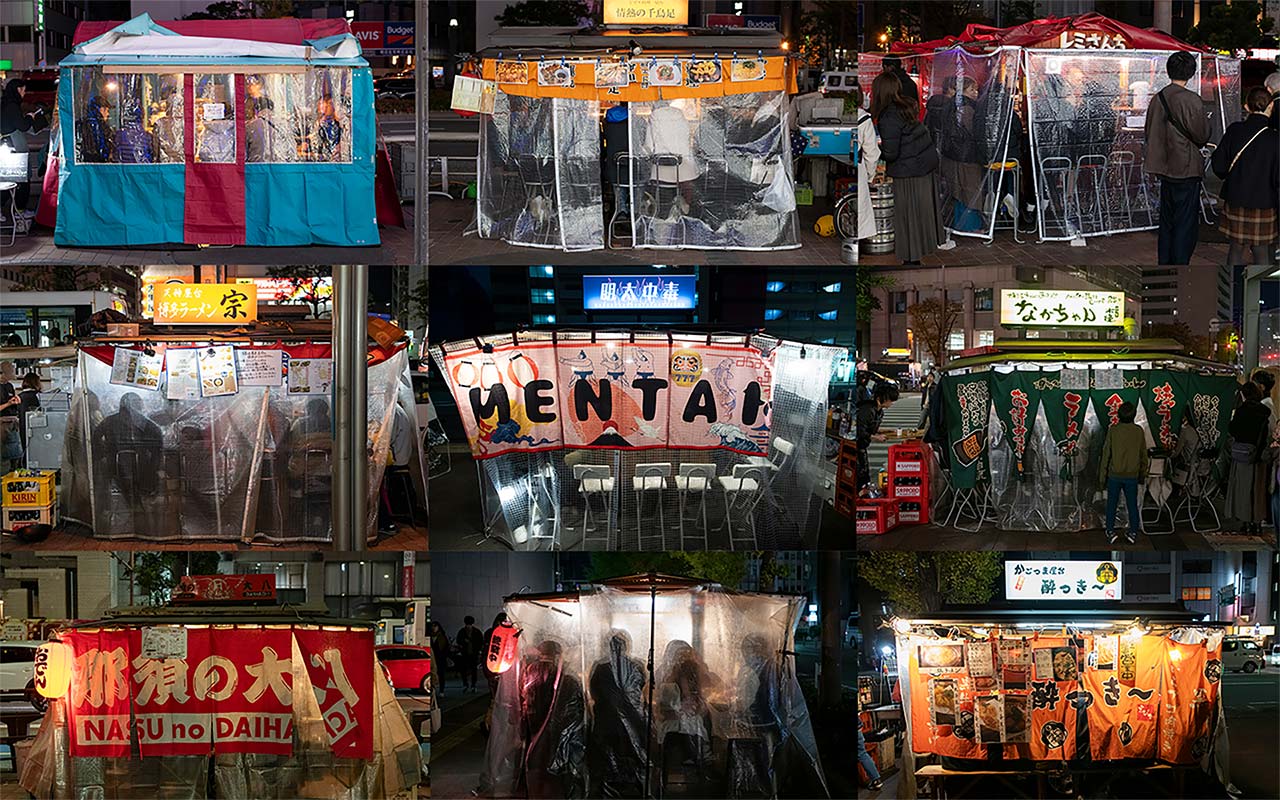
Long lines are quick to form around the most popular stalls, with some customers ready to brave the elements for over an hour for a seat at the table. In winter, yatai owners wrap their stands up in thick plastic to insulate the handful of lucky customers at the counter. From the outside, the blurry silhouettes of the backlit diners and muffled laughter filter out from the cosy interior. Wisps of steam rise from the tents, disappearing into the cold night.
Given the popularity of Fukuoka’s yatai culture today, it is hard to imagine that at one point it had seemed destined to disappear forever.
The history and future of Fukuoka’s yatai
Yatai first appeared on the streets of Fukuoka after the Second World War. Built out of the rubble from the bombed-out city, these makeshift stalls were a means to an end for thousands as they tried to rebuild their lives. As the country recovered, for many the yatai became a reminder of the struggles of the past. They did not fit with the image of a modern, resurgent Japan. Since 1955, the central government and the police have periodically tried to shut them down. Although the yatai have mostly disappeared in other Japanese cities, they survived in Fukuoka due to the tireless efforts that local politicians and residents have put towards protecting their local food culture.
“In the past, they had a bad reputation of being unhygienic,” says Kouske Morizono, a member of Fukuoka City’s department for promoting and maintaining yatai. “But today, all the yatai have access to running water and follow strict food hygiene laws. This means both visitors and locals can feel safe and enjoy a positive experience at the yatai.”
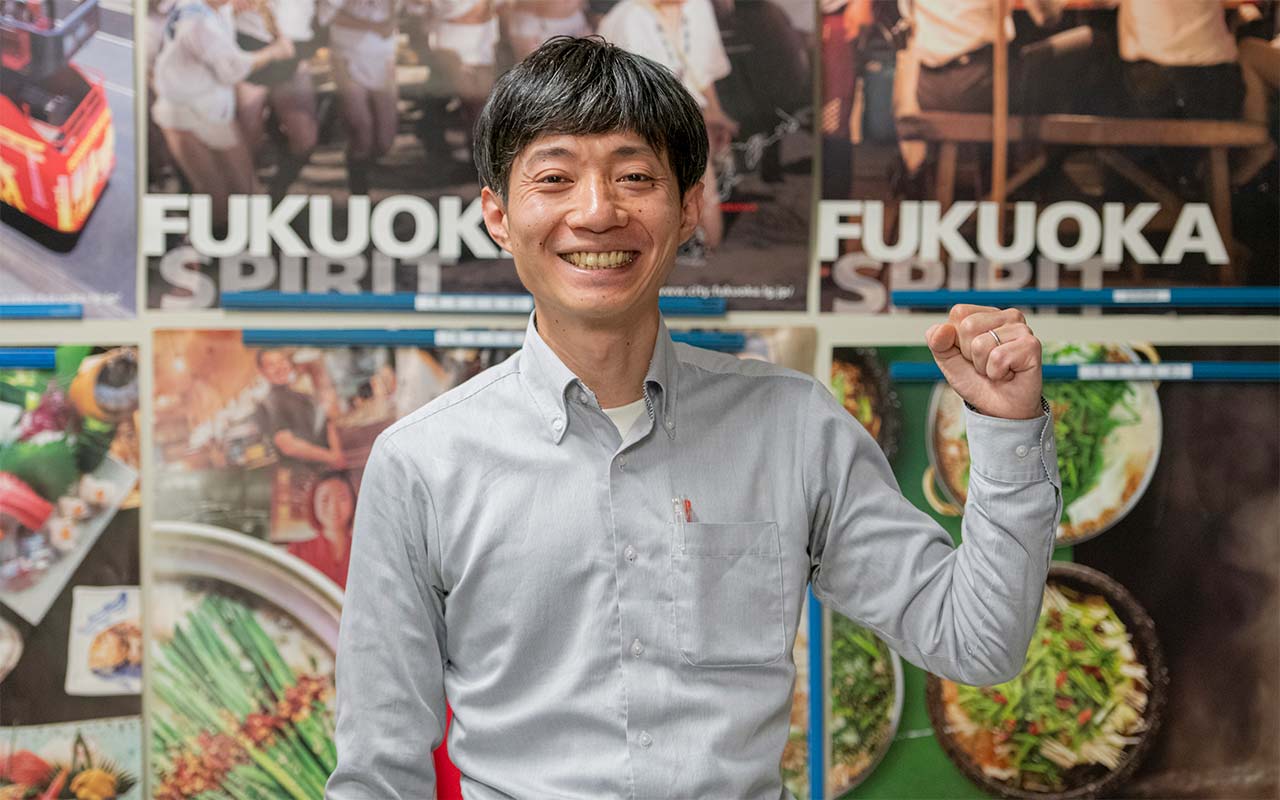
Although the number of yatai in Fukuoka has fallen steadily from its peak in 1965 of 427 stalls, a local government initiative in 2017 encouraged new applications for yatai startups. The success of the initiative has meant that yatai numbers have hovered around 100 stalls over the past eight years.
“The Fukuoka mayor is a fan of the yatai, and since 2017, we have helped 50 new yatai businesses start up. All the newcomers go through a rigorous testing and interview process,” explains Kouske. “A positive side-effect of our initiative is that the average age of yatai owners is coming down. Newcomers tend to be in their 20s and 30s.”
These younger newcomers bring with them a more youthful demographic of customers to the yatai scene. Below, we introduce three unique yatai – two from the new wave and one that has served customers for close to 40 years.
Fusion cuisine from an ex-NOBU chef
It is hard to miss chef Kensuke Kubota’s distinctive yatai Telas & Mico. This turquoise and burgundy food stand on Watanabe Street in Tenjin goes against the grain, given how most stalls adopt a uniform tin roof with a dark wooden frame. Telas & Mico set up shop in 2017 – the first of the new yatai owners taking up Fukuoka City’s call.
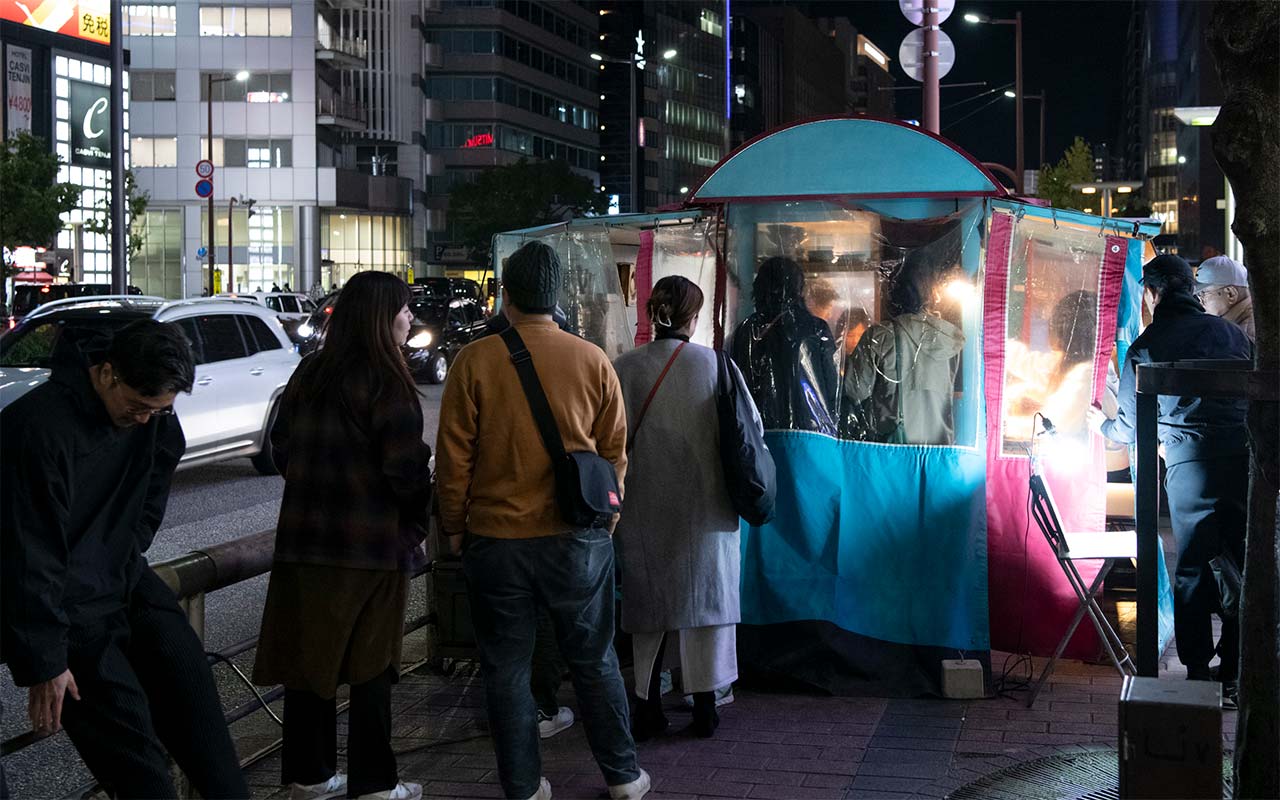
“I just thought it would be an interesting thing to do when I saw the call for new yatai owners,” says Kensuke. “The first two months were brutal. It felt like camping every day. It took a while to be accepted by some of the older yatai owners, especially with our modern yatai design. I guess they thought we were the new guys coming in and shaking things up.”
Having cut his teeth in the kitchens of iconic, high-end restaurants the likes of NOBU London and ZUMA London, Kensuke returned to Fukuoka and started his brick-and-mortar restaurant Telas & Mico in the Haruyoshi district in 2011. Since 2017, he has been running both his restaurant and yatai simultaneously, serving up fusion cooking that blends local Fukuoka ingredients with a western-style menu. Visitors to his yatai can expect fare such as grilled yakigushi (skewers), barbecued pork and handcrafted sausages.
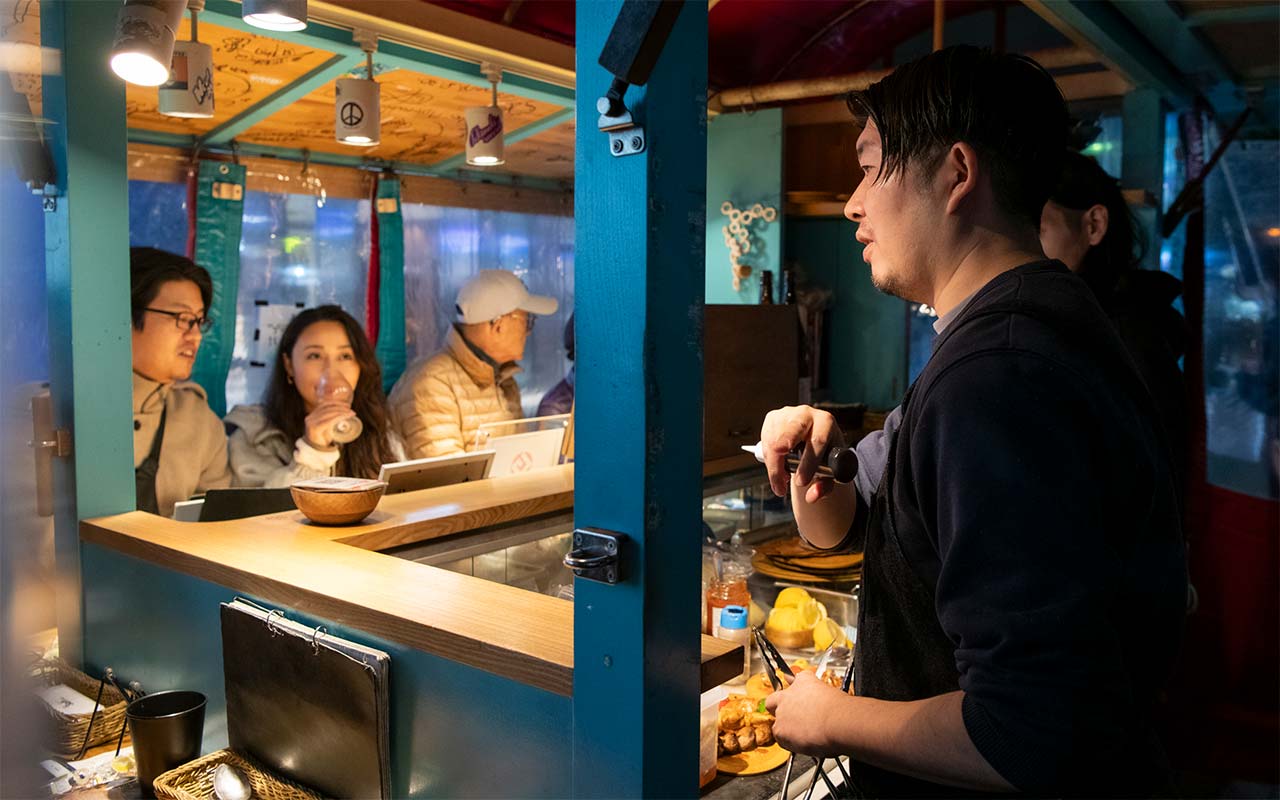
“Every day, I get to meet people from all over the world. It’s very different from the restaurant where I’m in the kitchen and not interacting directly with customers,” remarks Kensuke.
He adds, “We also seem to be a magnet for information about Fukuoka’s art events, club events and street culture. We readily share that with our customers who want to dig deeper into the heart of Fukuoka life.”
A booming spicy cod roe yatai in quiet Nagahama
The handsome 28-year-old Tatsuji Yonemitsu and his childhood friend Yuma Wago run Mentai Chudoku, where they offer an array of original dishes all made with Fukuoka’s local delicacy – spicy mentaiko, or cod roe. Mentai Chudoku, which translates to “cod roe addict,” is one of seven new yatai that repopulated the Nagahama district in June this year. In just five months, business at Mentai Chudoku has boomed, with locals and tourists alike seeking out their stall.
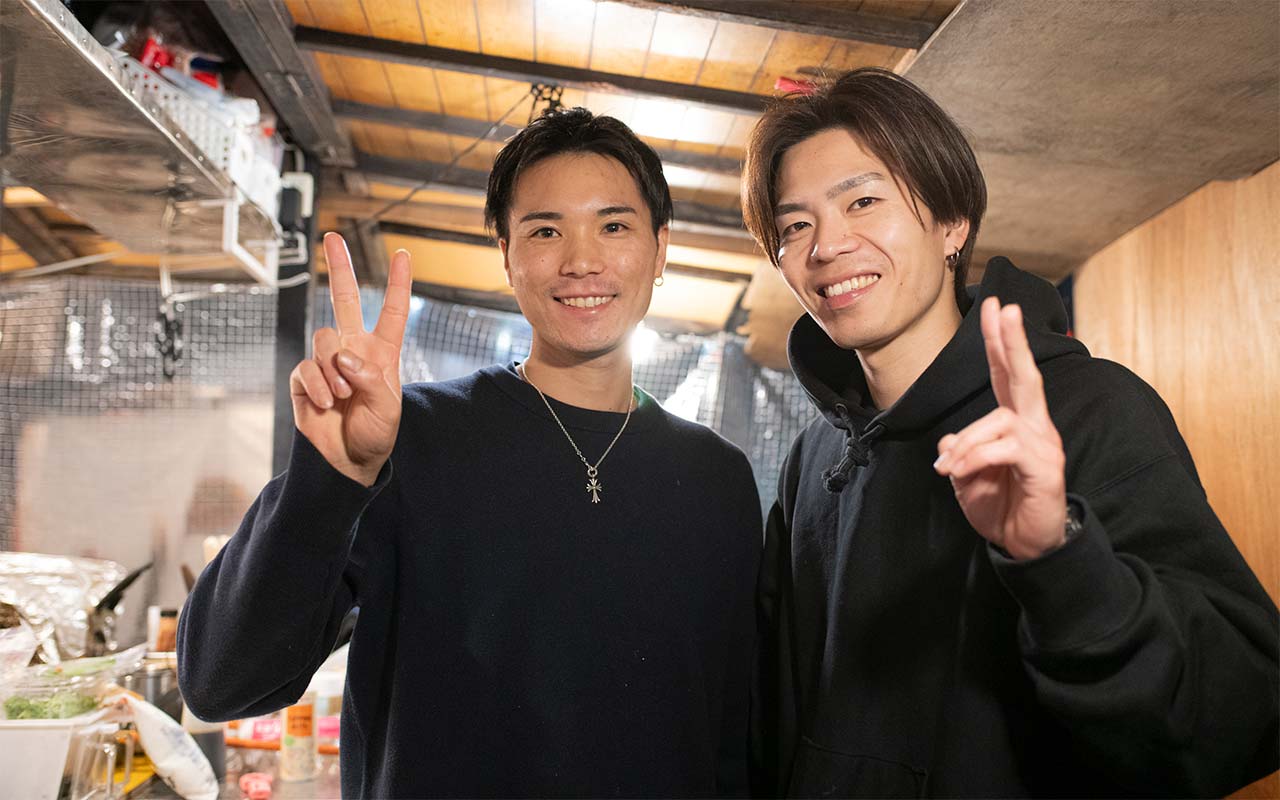
This is a far cry from the general atmosphere at Nagahama, which tends to see much less of a clamour for seats than in the more popular Nakasu and Tenjin districts. Situated along the side of Fukuoka’s main fish market, Nagahama’s yatai originally catered to fishermen and market workers. According to municipal government official Morizono, Nagahama is the most ‘local’ of the three yatai districts. Only 30% of customers visiting Nagahama are tourists compared to 60% in Tenjin and 95% in Nakasu.
“It has been merely five months, but we already feel a sense of community building here. I’m friends with the other yatai owners, and we have regulars who support us,” says Yonemitsu. “The atmosphere in Nagahama is similar to the yatai of old – relaxed and not too busy. You can come alone and still feel like you are part of a family.”
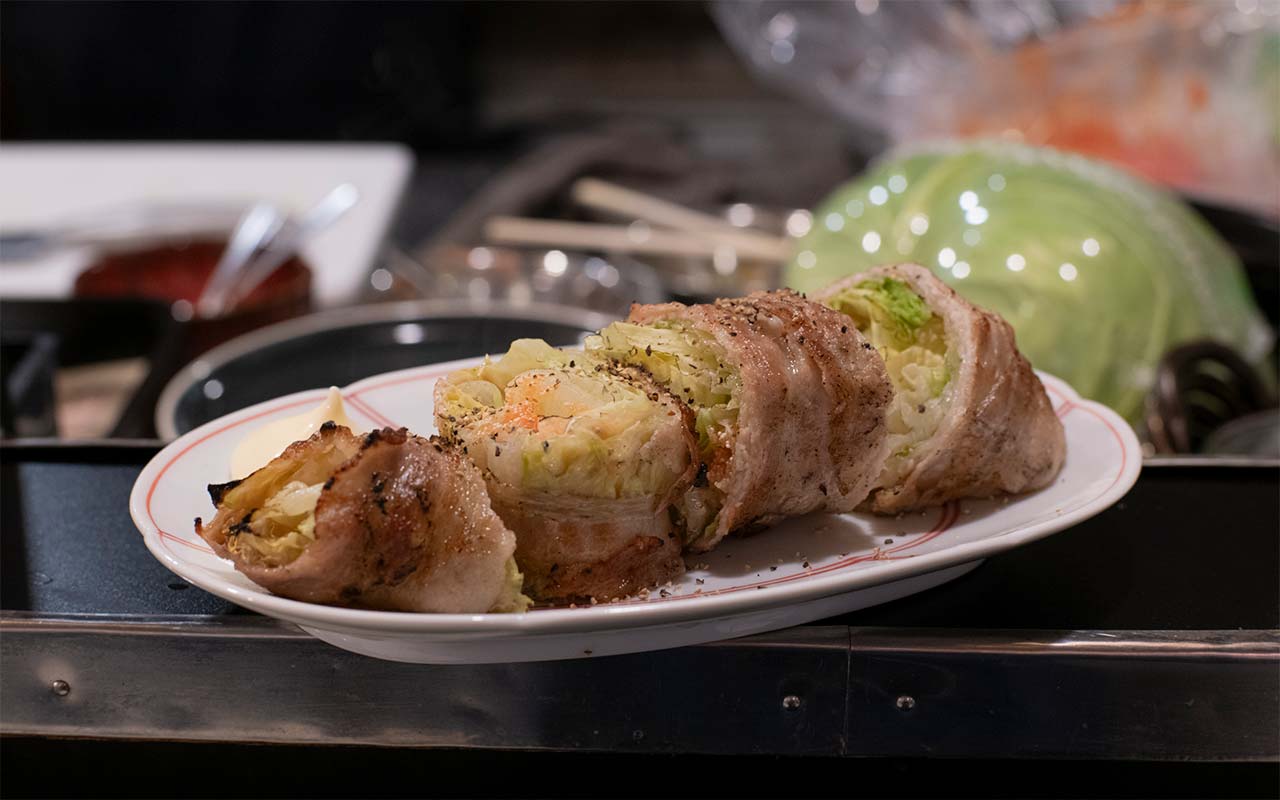
The focus on mentaiko comes purely from Tatsuji’s love of the ingredient. Their most popular dish is the mentaiko pork belly lettuce roll – mentaiko wrapped in delightfully light but succulent layers of lettuce, covered with strands of grilled pork.
“My wife comes up with many of the recipe ideas. She has a gift for it,” says Tatsuji. “The best way to enjoy the yatai is to try a few stalls in one night, so you’ll want to pace yourself with the food. This pork belly lettuce roll is perfect because it’s both satisfying but light at the same time.”
A snug four-decade-old cocktail destination
Cocktail bar Yatai Bar Ebichan run by Takeshi Ebina and his wife Akiko is a Fukuoka institution. After leaving his job in a high-end bar, Takeshi’s father Akio had decided to transfer his skills and exacting standards to the yatai scene, opening his own independent cocktail bar in 1986. Takeshi left his day job 10 years later to help his trailblazing father and took over the reins in 2013.
“My father faced so much opposition when he decided to open this yatai,” says the immaculately dressed Takeshi in his white suit and black bowtie. “Back then, almost all the yatai sold ramen, tempura or oden. So, when they heard my father wanted to open a cocktail bar, everyone told him it would never work.”
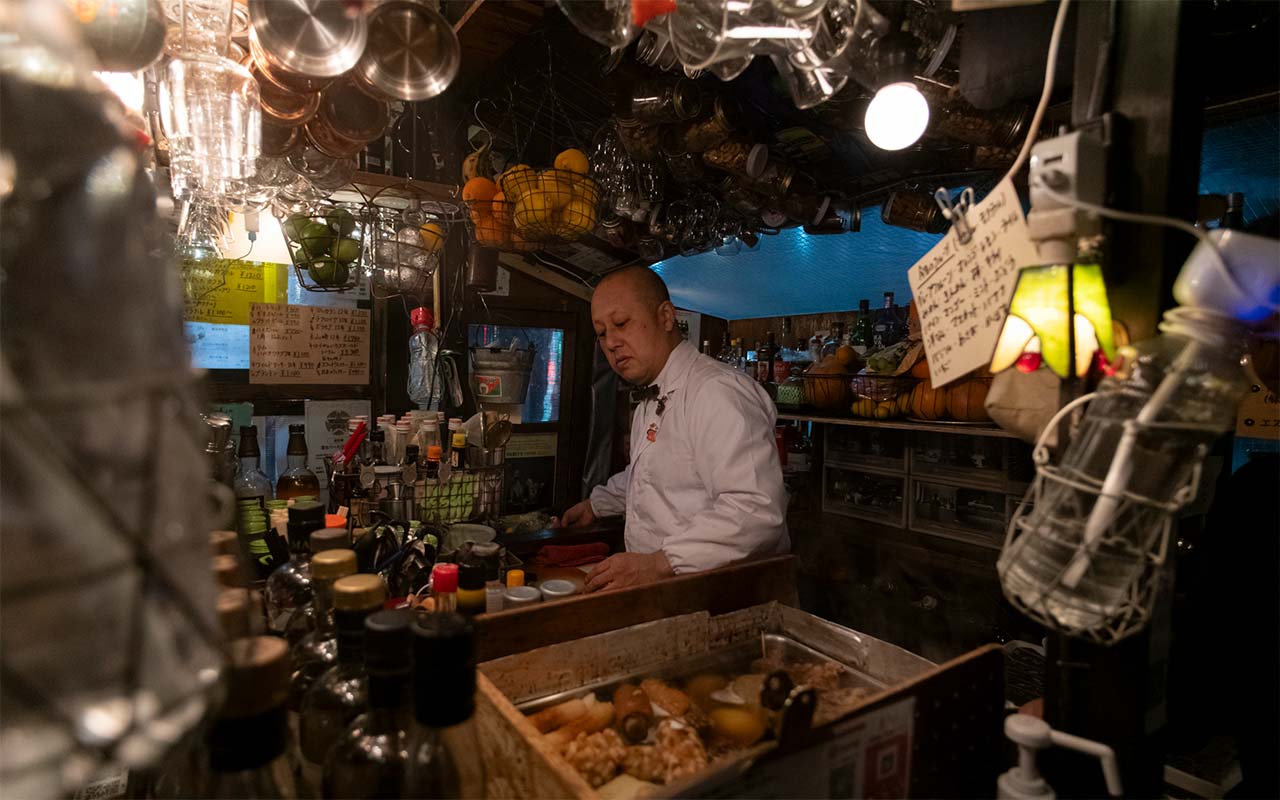
Thankfully they persisted, and now you can enjoy one of the most delightful yatai stands in the city. You’ll find it on a wide and spacious stretch of Showa Dori Ave, a key artery through the city, where it stands next to the Nishi Nakashima Bridge that connects the bustling districts of Tenjin and Nakasu. Once he opens his doors at 7pm, he has a constant stream of customers coming to sample his cocktails as an aperitif, a digestif, or both.
Takeshi makes a point of using the most seasonal and local ingredients to prepare his vast array of cocktails. For a gin and tonic, he uses the local Fukuoka Jin40-Asakura Craft Gin. It’s made with a barley shochu base spirit that infuses the drink with a distinct aroma. Many of his cocktails are unplanned and unnamed, as he tailors his creations on the spot to match the tastes and requests of his customer.
“Our menu is full of cocktail varieties, but if a customer doesn’t know what to order, they can tell me what they like and leave it up to me,” explains Takeshi, a bartender at the height of his powers. “If it gets cold in winter, I sometimes recommend warm cocktails.”
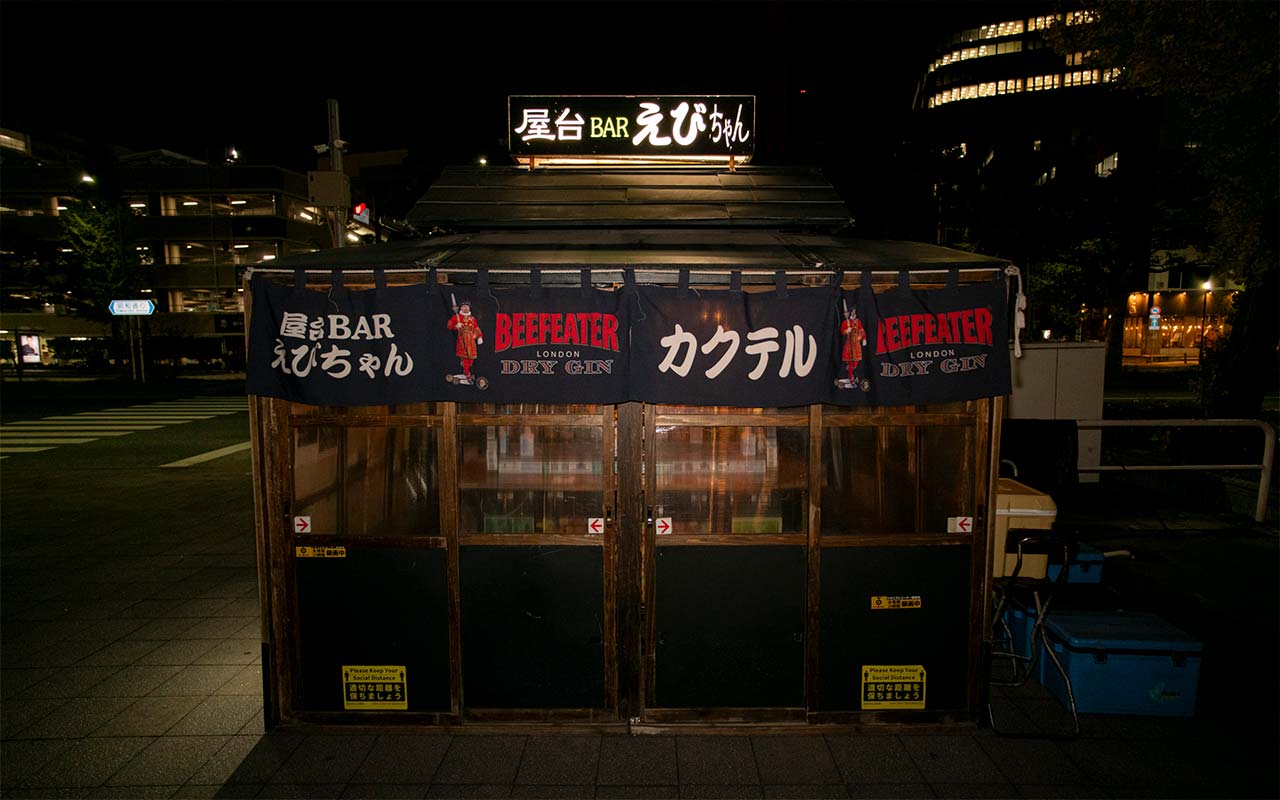
His clientele regularly includes cocktail aficionados and bartenders from across the world. All are intrigued to meet Takeshi and drink in one of the most unique cocktail bars in the world.
While we talk, Takeshi crafts an exceptional cocktail made from fresh wasabi, tequila and yuzu liqueur.
“This one doesn’t have a name yet,” says Takeshi. “But cocktail fans love to try something with fresh wasabi.”
Kouske Morizono’s guide to enjoying the yatai
Tips from an expert
- Rather than just sticking to one stall, try yatai hopping to experience a variety of yatai in one evening.
- Every yatai has a menu – many of which are in English – and most owners hang them outside so that you can peruse the options before entering the stand.
- Yatai do not have toilets, so make sure you visit a restroom before you go.
- Seats at the yatai are at a premium, so try to order at least one dish per person, especially if you’re visiting in a big group.
- Most yatai visitors enjoy chatting, so feel free to strike up a conversation with the person next to you.
For more information on Singapore Airlines flights to Fukuoka, click here.
All photos by Tom Miyagawa Coulton unless otherwise stated. Hero image from Shutterstock.
The post Peering into Fukuoka’s ‘hawker’ havens appeared first on SilverKris.
from SilverKris
No comments:
Post a Comment